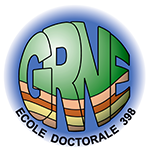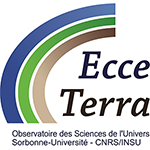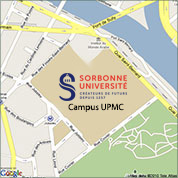Séminaire ISTeP - Pierre Sansjofre
(IUEM Brest)
The Neoproterozoic record of extreme climate and oceanic chemical perturbations: new perspectives from sulphur isotopes
The Neoproterozoic Era (1000 to 541 Ma) is characterized by extreme climate perturbations (Snowball Earth Events) and increased oxygenation of the atmosphere and oceans (the Neoproterozoic oxidation event, or NOE). Atmospheric oxygen approached present–day levels for the first time, a critical event that appears to have paved the way for the proliferation of animal life (Shields-Zhou and Och, 2011). The Neoproterozoic sedimentary record is marked by significant changes in various redox tracers, including trace metals (Mo, V, U) and trace metal isotopes (Mo, Cr), rare earth elements, iron speciation, and dramatic carbon isotope excursion (Frei et al., 2009; Partin et al., 2013; Sahoo et al., 2012; Shields-Zhou and Och, 2011). It also reveals the most positive sulphur isotope (34S/32S) excursion in Earth’s history, with strong variability and maximum values around δ34S ~ +38‰. In this presentation I will explore the connection between the NOE and the evolution of the marine sulphur cycle using multiple sulphur isotopes, including the less abundant isotopes 33S and 36S in addition to 34S and 32S (Farquhar et al., 2003). Based on results from Brazilian carbonates covering late Cryogenian (~635 Ma) glacial deposits and data from the literature for coeval units (Johnston et al., 2005), I will detail a new approach which suggests that increased sulphate reduction may have been the trigger for terminal Earth system oxygenation in the Neoproterozoic.
15/04/2016 à 12h30, salle Fourcade (Tour 55-56, 4ème étage)
Egalement dans la rubrique
Chiffres clés (Mars 2025)
L'ISTeP comprend 131 membres dont :
Permanents (66)
- Professeurs : 17 (+2 PAST)
- Maîtres de conférence : 26
- Directeurs de recherche CNRS : 1
- Chargés de recherche CNRS : 1
- ITA : 19
Personnels non permanents (65)
- Collaborateurs bénévoles / émérites : 17
- Chaire de professeur junior : 1
- Enseignants-chercheurs contractuel : 2
- 1 MCF accueil en délégation
- ATER et Post-Docs : 9
- Doctorants : 32
- ITA-BIATSS : 3





